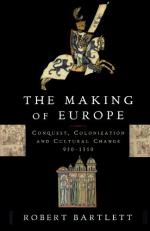|
This section contains 4,039 words (approx. 14 pages at 300 words per page) |

|
Kings and Queens. Monarchy, in which a single person possesses complete authority over a state and claims that authority by the grace of God, was the accepted form of government in most nations of Europe in the mid eighteenth century. On the monarch's death the crown was passed to an anointed heir, usually the eldest son. In some states, such as Great Britain and Russia, the sex of the heir was not a great issue; queens could rule as well as kings. In other states, France for instance, women were not allowed to reign as queens in their own right. Because all state power was technically vested in the hands of a single person, the personality, intelligence, mental stability, and character of a monarch were of paramount importance. Strong monarchs gave their administrations a sense of confidence and direction...
|
This section contains 4,039 words (approx. 14 pages at 300 words per page) |

|




